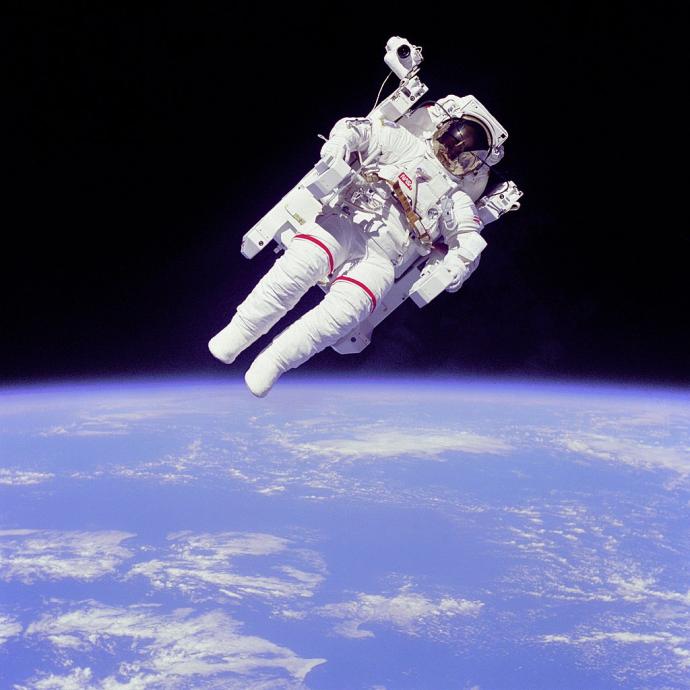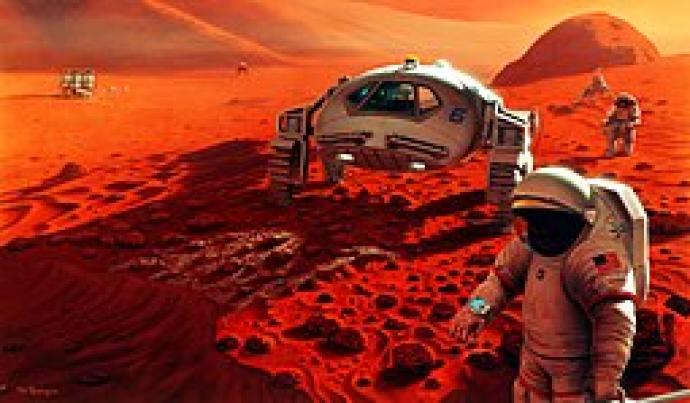Humans have been travelling to space since the 1950s.
We have used telescopes to study space for centuries, but it was the invention of massive rockets which finally let us explore space in person.
Space exploration is complex and costly. This means it often takes more than one nation working as a team to plan and launch a mission successfully.

- Early Crewed Space Missions
During the space race, the first astronauts and cosmonauts went to space in the 1950s. This was a political competition between the USA and the USSR to put people in space. The USSR won the race to put the first person in orbit around the Earth and launched the first woman cosmonaut.
Humans have travelled as far as the Moon. This was the result of NASA, in America, working on human space flight programs in the 1960s and 1970s. These included the Gemini and Mercury missions and the Apollo missions to the Moon.
Even today, the Moon is still the furthest humans have ever been.
NASA's Apollo program resulted in the first humans walking on the Moon. The first four flights tested the equipment. Six of the other 7 flights successfully landed on the Moon. These Moon flights all happened between 1969 and 1972.
A total of 12 astronauts have walked on the Moon. While there, they carried out scientific experiments, studied the lunar surface and collected Moon rocks. The missions brought 400 kg of rock and dust from the Moon's surface to Earth. This rock is still being studied by scientists in labs all over the world.
The first crew to orbit the Moon was on the Apollo 8 mission. The three astronauts inside—Frank Borman, James Lovell, and William Anders—were the first humans to see and photograph an 'Earthrise'. Apollo 8 took almost three days to travel to the Moon. The crew orbited the Moon ten times over twenty hours before returning to Earth.
The first mission to land on the Moon was Apollo 11. Neil Armstrong and Buzz Aldrin became the first people to walk on the Moon on 20th July 1969. When he stepped onto the Moon, Neil Armstrong famously said:
“That's one small step for a man, one giant leap for mankind.”
The third member of the Apollo 11 crew, Michael Collins, stayed inside the spacecraft, in orbit around the Moon. This was to make sure all three astronauts made it safely back to Earth. All 3 astronauts landed back on Earth in the Pacific Ocean on 24th July.
The Apollo 13 mission didn't land on the Moon due to a serious fault with the oxygen supply. Instead, the crew looped around the Moon and returned to Earth. All landed safely. Because of their large loop around the Moon, the Apollo 13 crew have travelled further from Earth than any other astronauts.
Image CreditThis work by NASA is licensed under Creative Commons Zero v1.0 Universal
CreditThis work by NASA is licensed under Creative Commons Zero v1.0 UniversalBuzz Aldrin, taken by Neil Armstrong - Human Space Flight
Today How many astronauts can you name? Maybe 1 or 2? Well done if you can name more than 5! But did you know more than 500 people from more than 30 countries have been to space?!
Did you know humans have been in space since the 1970s?
Astronauts live and work for long periods of time on space stations, which are huge spacecraft large enough for several people to live on. Space stations are also science labs that orbit the Earth. Experiments carried out on space stations let us learn about the effects of microgravity.
Image CreditThis work by NASA is licensed under Creative Commons Zero v1.0 Universal
CreditThis work by NASA is licensed under Creative Commons Zero v1.0 UniversalAstronaut Bruce McCandless floating freely in his space suit - Future Crewed Space Missions
Scientists and engineers never stop trying to improve our knowledge of space. New technology and ideas will let us explore more space in the future. Maybe people will live on Mars!
What will the future of space exploration hold?
At the moment, there are more than 70 government space agencies. These include the American agency, NASA and the European agency, ESA. There are also a number of commercial companies, like SpaceX. These groups have plans for the next giant leaps forward in space exploration.
Image CreditThis work by NASA/Pat Rawlings is licensed under Creative Commons Zero v1.0 Universal
CreditThis work by NASA/Pat Rawlings is licensed under Creative Commons Zero v1.0 UniversalArtist's impression of humans on Mars - Back to the Moon
So far, the Moon is the furthest humans have travelled from Earth. The last humans on the Moon were the Apollo 17crew in 1972. NASA and ESA are working on a new mission to the Moon, the Artemis mission.
The first flight of the Artemis rocket took place on 16th November 2022, with the payload orbiting around the Moon and then returning to Earth.
- Humans on Mars
Mars is the closest planet to Earth. Many scientists see it as the next place for humans to explore. It could also be a stepping stone for exploration to more distant planets.
NASA intends to send the first humans to Mars by 2030. SpaceX also wants to send crewed missions to Mars. Their goal is to set up a human colony on the red planet.
The future of space exploration needs people with the skills to make it happen! Discover the range of careers linked with space exploration.
